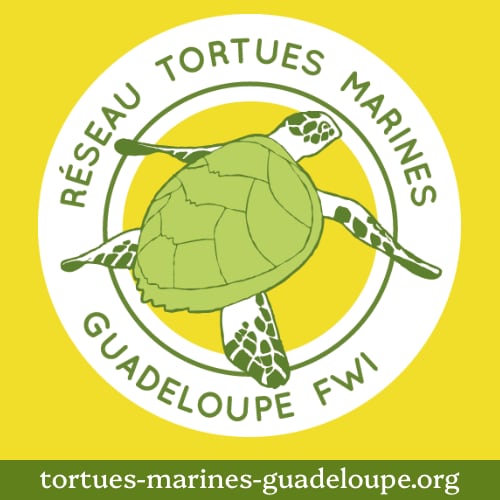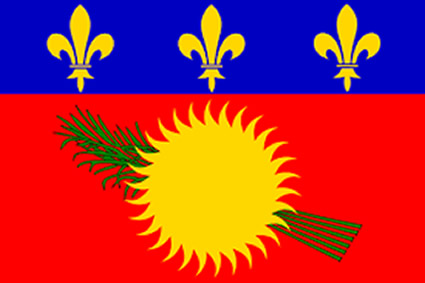Guadeloupe is a French Overseas Department Island Group in the Caribbean sea.
Guadeloupe is an archipelago of inhabited and uninhabited islands located among the Leeward Islands in the Lesser Antilles in the southern Caribbean Sea. View Map. Guadeloupe is famous for its green, lush vegetation, Creole and French culture, fascinating history and water sports.
1. Butterfly Shape:
Guadeloupe is often referred to as the "Butterfly Island" due to its unique shape, which resembles a butterfly with its two main islands, Grande-Terre and Basse-Terre, separated by a narrow sea channel called the Rivière Salée.
2. Biodiversity Hotspot:
The island boasts an impressive range of biodiversity, especially within the Guadeloupe National Park, which is home to the Soufrière volcano, lush rainforests, and diverse wildlife. The park is a UNESCO Biosphere Reserve, highlighting its ecological significance.
3. Cultural Melting Pot:
Guadeloupe's culture is a vibrant blend of French, African, Indian, and Caribbean influences. This fusion is evident in its music, dance, and cuisine, which includes delicious dishes like Colombo (a Caribbean curry) and accras (salted cod fritters).
4. Creole Heritage:
The local language, Antillean Creole, is widely spoken alongside French. This Creole language has its roots in the island’s diverse cultural history and is an essential part of Guadeloupean identity and daily life.
5. Carnival Celebrations:
Guadeloupe is famous for its lively and colorful Carnival, which takes place every year from January to Ash Wednesday. The festivities include parades, music, dancing, and elaborate costumes, reflecting the island's rich cultural heritage and love for celebration.
Enjoy your stay!

"La Marseillaise"
Lush, green and mountainous with a sulphuric volcano.
Grande Terre:
Flat, dry with lots of beaches.
Les Saintes:
Beautiful bays: Terre de Haut and Terre de Bas.
La Désirade:
Natural and relatively untouched.
Marie Galante:
The biggest island out of mainland Guadeloupe.
Petite Terre:
Natural, uninhabited and untamed.
A major tourist destination located on South edge of Grande-Terre. Excellent for swimming. Calm clear waters due to a few sandbars extending into the ocean. Enough shaded areas. Not overly crowded but quite active with sun bathers, snorklers, swimmers, kayakers and boaters. No restrooms on site but at businesses close by. The beach is walking distance just south of the city with enough parking spots if you go by car.
Creole Beach
The beach is located on the South West coast of Grande-Terre just outside Pointe à Pitr, 1 mile west of Gosier. A water sports center and the Creole Beach Hotel bar is on site with rentals of umbrellas and chairs.
Creole Beach is very snorkeling and family friendly with restroom and shallow water for kids.
La Grande-Anse
Beach area is not developed, and therefore not crowded. Very peaceful and great for relaxation. Plenty of shade from the plenty of palm trees - a very exotic appeal. Heads up, the beach area has a steep incline into the water. And there are no restrooms, so not very children friendly. Two roads to the beach. One to the southern side is long and bumpy ride. The one to the north is much shorter. Great for surfing.
Plage Caravelle
Has protective reef. Snorkeler friendly.
Located on the South West edge the island of Grande-Terre, 4.4 miles east of Gosier. Not too touristy. Very quiet and super for relaxation.
Plage de La Malendure
Located on the North edge of Basse-Terre in the vicinity of Mahaut. Although this is a big beach it never gets overcrowded. The beach has a concession stand and on a good day some mobile vendors, but no restrooms.
Excellent for snorkeling and scuba diving.
Columbus consecrated the territory to Our Lady of Guadalupe of Extremadura in Spain. The Caribs stood their ground agains the Spanish troops and settlers in 1515, 1520, and 1523.
In 1626 the Spanish, who had established themselves on the coast, were driven away by a Frenchman Pierre Bélain (sieur d'Esnambuc), who established a trading company.
In 1635 the Frenchmen, Léonard de L'Olive and Jean Duplessis d'Ossonville, landed and established a colony. The colonists fought against the Carib Indians until 1640, but the colony kept on growing.
In 1644 slavery became institutionalized when slaves were brought for the sugar, coffee and other plantations.
In 1674 Guadeloupe was passed to the authority of the French crown and became a dependency of Martinique until 1775.
In 1703 Jean-Baptiste Labat the founder of the Basse-Terre colony armed the island's African slaves to fight against the English. He also established the first sugar refineries which lead to the economic prosperity.
In 1759 Guadeloupe was occupied by the British for four years, but restored to France in 1763.
In 1794 it was again occupied by the British and French royalists. But not for long. The French revolutionary official Victor Hugues took it back, abolished slavery, and had hundreds of white planters massacred.
In 1802 slavery was reestablished under Napoleon I's government in the French colonies causing a slave revolt where antislavery forces blew themselves up rather than surrender.
In 1810 the British occupied Guadeloupe again but was again restored to France in 1816.
In 1848 the final abolition of slavery was effected. During the reign of Napoleon III of France universal suffrage was abolished but restored in 1870.
In 1940 Guadeloupe allied with the Vichy government of Nazi-occupied France during World War II (1939-45).
In 1943 it allied with General Charles de Gaulle's Free French forces.
In 1946 it became a French departement, and in 1974 it became a region of France.
In the 1970s, separatist groups became more violent and bombings on the islands and in Paris were attributed to Caribbean independence groups.
Here's a tip for living the Caribbean life. Turn down the music when driving and open your windows. Enjoy the soothing tunes of nature, and feel the cool breezes coming through the palm trees.















